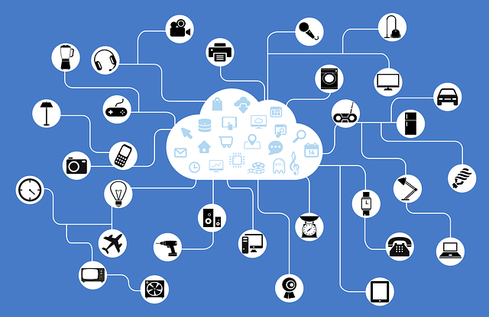A recently released Gartner report, based on Equinix network hub use, finds that an "interconnect" service is one of the keys to an enterprise's digital future.


10 IoT Security Best Practices For IT Pros
10 IoT Security Best Practices For IT Pros (Click image for larger view and slideshow.)
The conversion to a digital economy is going to be more challenging than establishing a website and mounting an entry point to an e-commerce system on it.
Instead, many core systems now found in the enterprise data center are going to need their functionality migrated out to a different data center facility -- one that is closer to those customers that the business is trying to reach.
On July 28, Gartner analyst Bob Gill issued a report on how an offsite connection hub, or "interconnect" service, is likely to serve as the glue for future digital economy applications.
That's because digital business will require a wide variety of application services to work together. At the same time, many of these apps will not be on the premises of those businesses that want to utilize them.
The modern digital business application will need to connect to "new data types and sources, as well as third-party data feeds," Gill predicted. That may include reaching the apps over a private network that may use a different telecommunications provider than the one that supports the corporate network.
It might also mean linking the enterprise data center to a carrier neutral data center nearby, but one that is almost certainly off-site, Gill wrote.
The need to keep latencies lower than the standard operation of the internet will dictate that businesses will need to get their mission-critical e-commerce applications tied into such a hub as well. Secure operations at predictable performance "will spell the difference between digital business success and failure," Gill wrote.
Equinix's View
If any of this sounds vaguely familiar, that's because Equinix, which operates a series of carrier-neutral hubs in major metropolitan areas, has been saying much the same thing for over a year now. The basis for Gill's report included interviews with over two dozen Equinix customers, who explained how they were changing their data centers architecture after gaining access to the interconnection service.
Equinix typically has 40 to 60 carriers converging in its "meet me" room. Connections for a customer can be ordered online and established automatically. In addition to Equinix, many colocation services, third-party data center providers, and some telecommunications carriers offer meet me rooms of their own, with different carriers available.
Underlying both what Gartner and Equinix are talking about is a more fundamental shift, one that is just getting underway, but that is likely to accelerate.
The digital business application of the future will need to be a distributed application, functioning not where the business is, but closer to the edge of the network, where the customers are. Companies that wish to survive in the digital economy will start building the equivalent of content distribution networks -- but only for their key business applications.
CDNs deal with static content that remains the same until an update is sent to all sites from a central authority. The distributed business application will need to be interactive, both with customers and with headquarters, and ready to be updated at any time.
Practical Advice
After going through the evidence of the need for the change, Gill gave three points of advice in his report, "Co-location-Based Interconnection Will Serve As The 'Glue' For Advanced Digital Business Applications."
Build digital business applications by paying attention to the complexities of connecting to many sources of data, services, and customers with the appropriate business logic in a manner that is low-latency enough to prevent excessive delay.
Deploy such applications "in a carrier neutral facility."
Plan to marry such data center systems as container orchestration and application/workload migration, so that the scheduling and deployment that works inside the data center can be made to work outside the data center as well.
A new breed of applications for digital business will "involve significant database use, disparate data source[s] and multiple cloud providers, with a need for very low latency between the systems," Gill concluded.
The corporate WAN running from the enterprise data center to a cloud provider, "with switching taking place back at the enterprise, won't have adequate performance. What's needed is very high performance via a programmatic, secure and manageable fabric."
"Companies will have to pivot and move stuff closer to the edge of the network," added Tony Bishop, Equinix vice president of global vertical strategy, in an interview with InformationWeek. "Business will need to flip the architecture from centralized systems with a thin veneer at the edge to bringing core data center systems to the edge."
What Others Are Doing
An example cited by Bishop is the way that GE is moving its Predix analytics for machine learning and the internet of things technologies out of centralized GE data centers to a series of locations around the world.
By having Predix analytics available in a major metropolitan area, GE is closer to its likely customers. It can offer them analytics with reduced latencies closer to real-time. When data is being collected that indicates the machinery is about to fail, quick turn-around times may be a big competitive advantage for the GE system.
Online banking is another system that needs to be distributed close to consumers for the turn-around times to be satisfactory. Retailers and service providers of many stripes will be caught up in the shift, Bishop added.
Equinix released its blueprint of how to accomplish the shift during the Gartner Catalyst Conference in San Diego, which took place this week. It has made copies of a "playbook" entitled "IOA Playbook -- Architecting the Digital Edge," available through this registration-required site.
Bishop said the company was making the proposed digital business architecture open source, available to all who are interested, as part of its effort to drive a conversation around the role of the network hub and the "interconnect fabric," as a necessary component of future digital business applications.
(Editor's Note: this article was modified August 25 after we received new information from Equinix about Gartner’s report.)
About the Author(s)
You May Also Like







